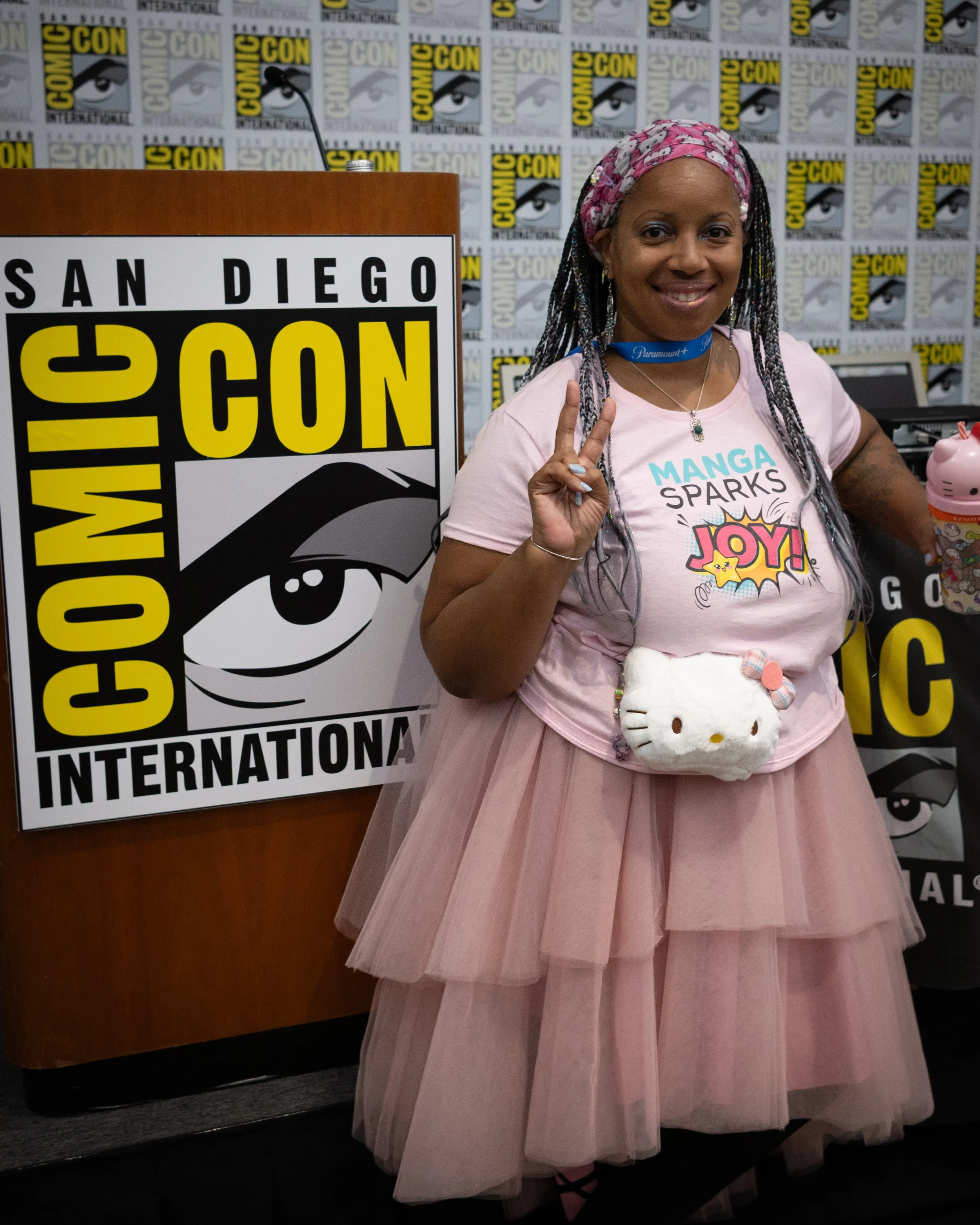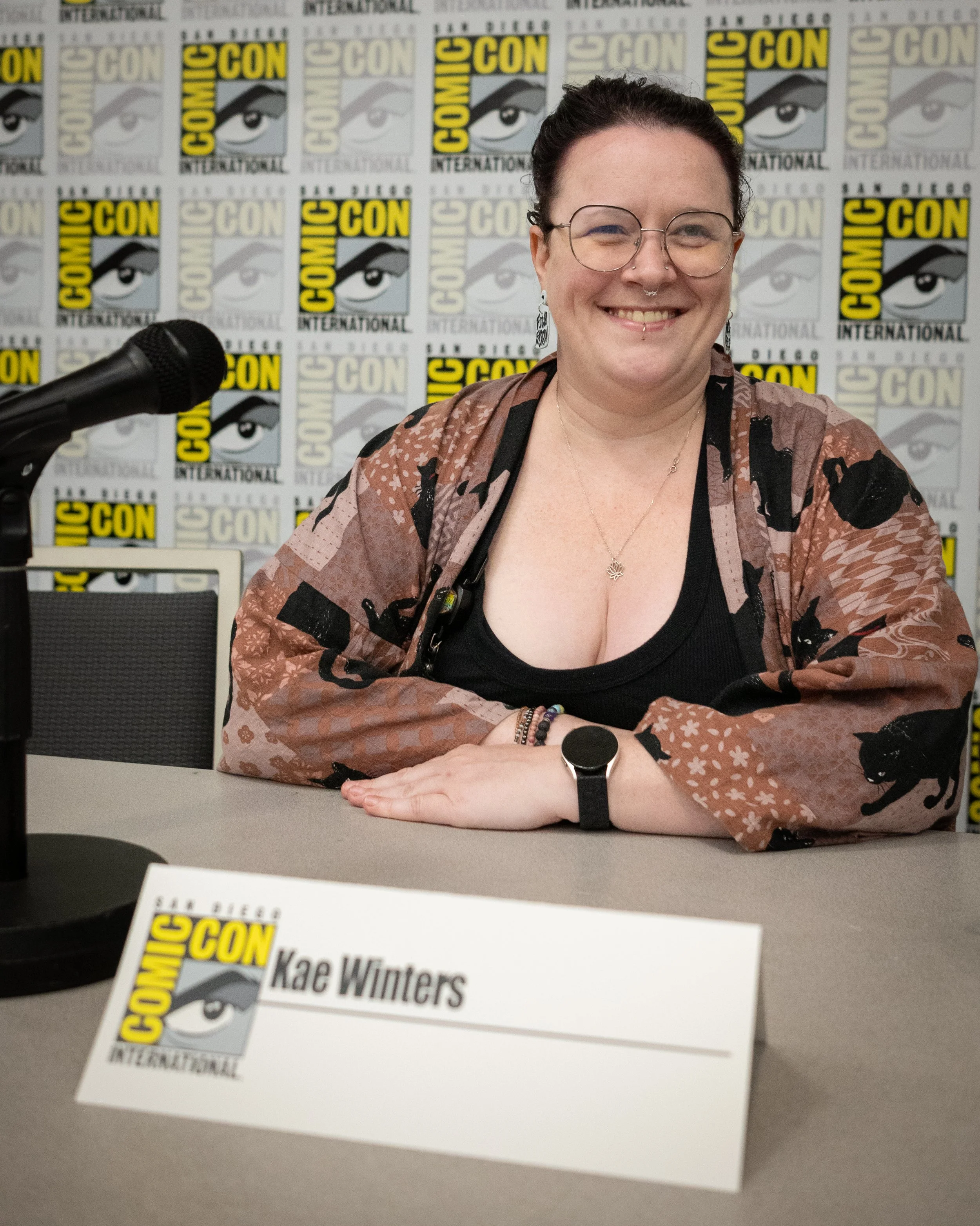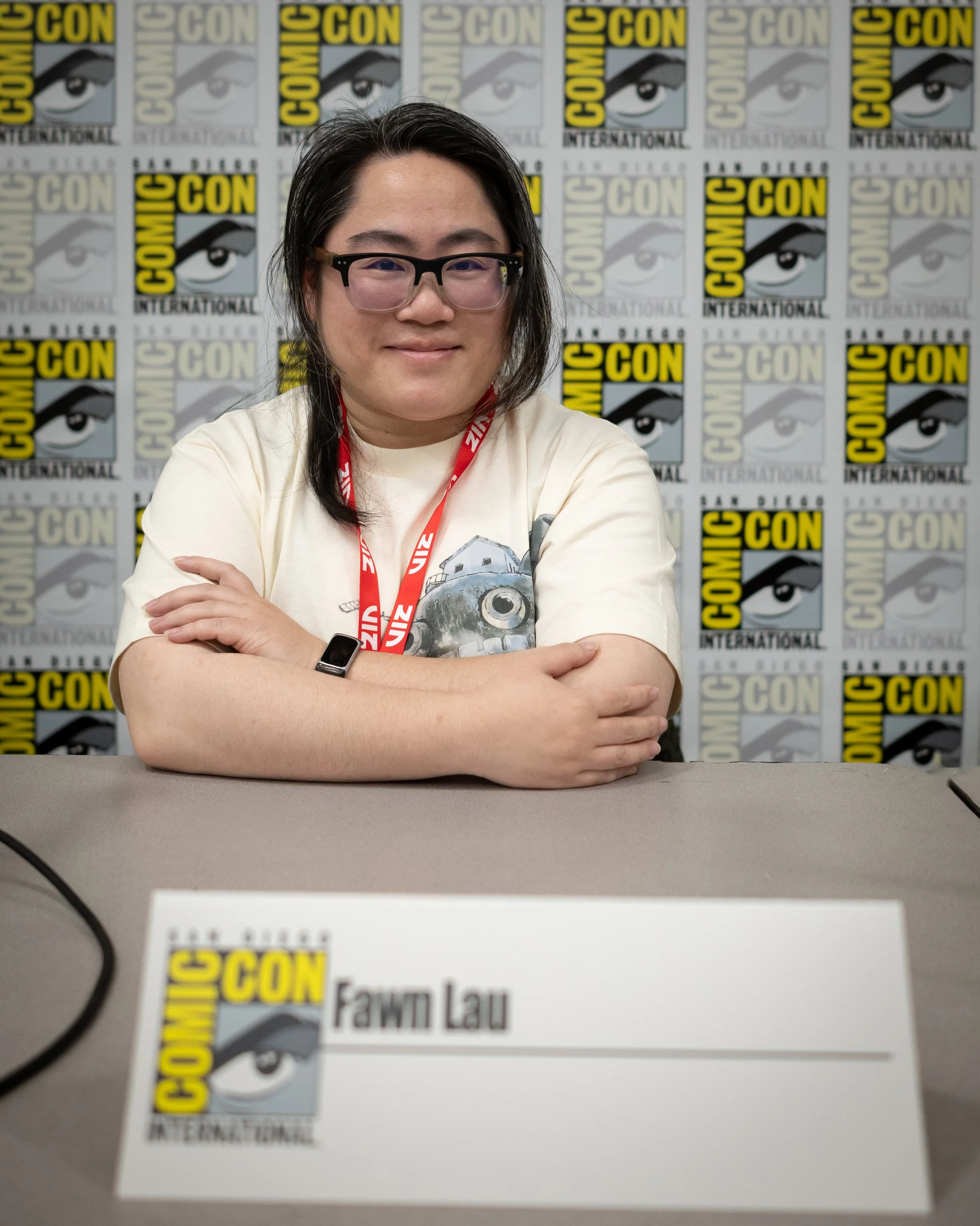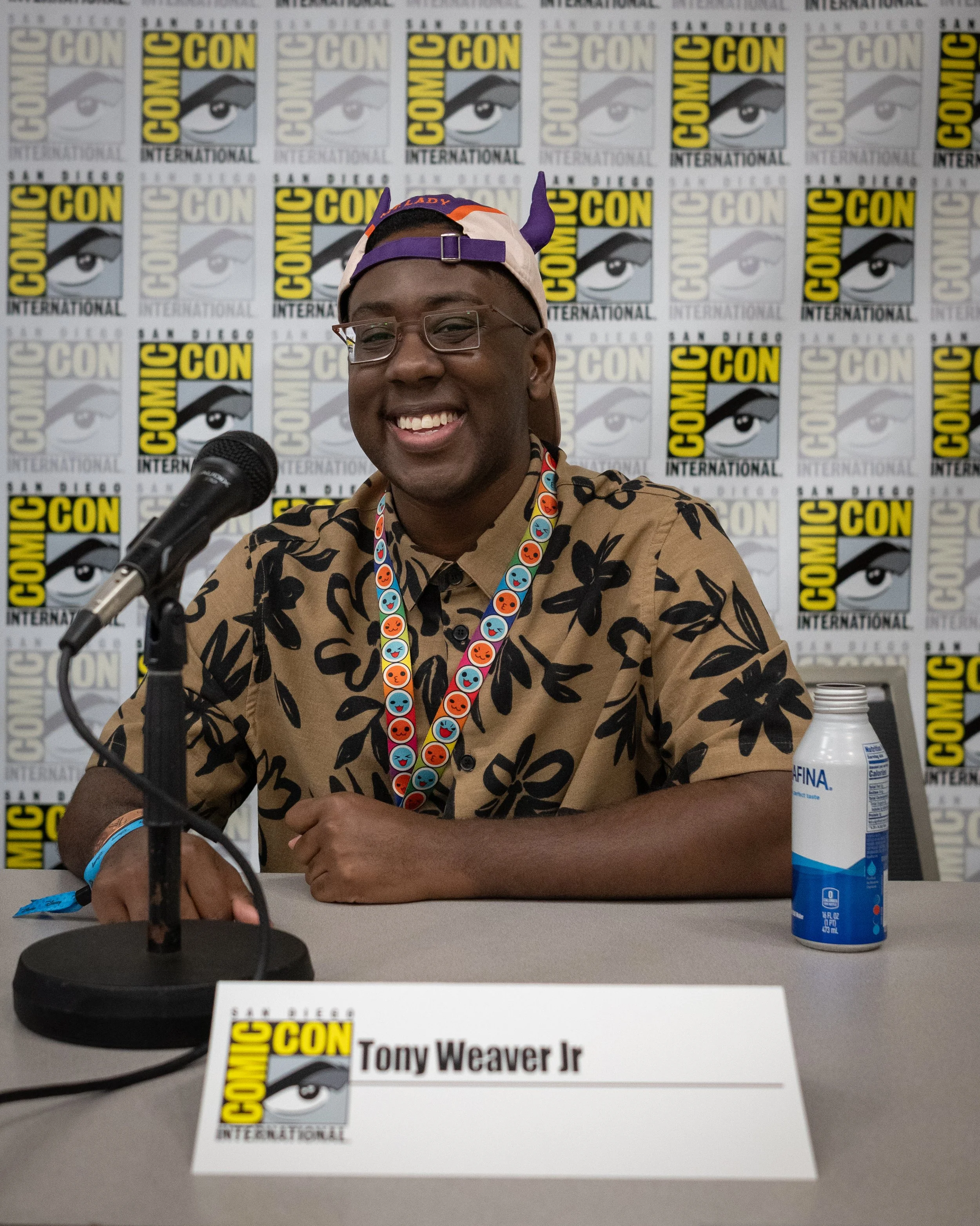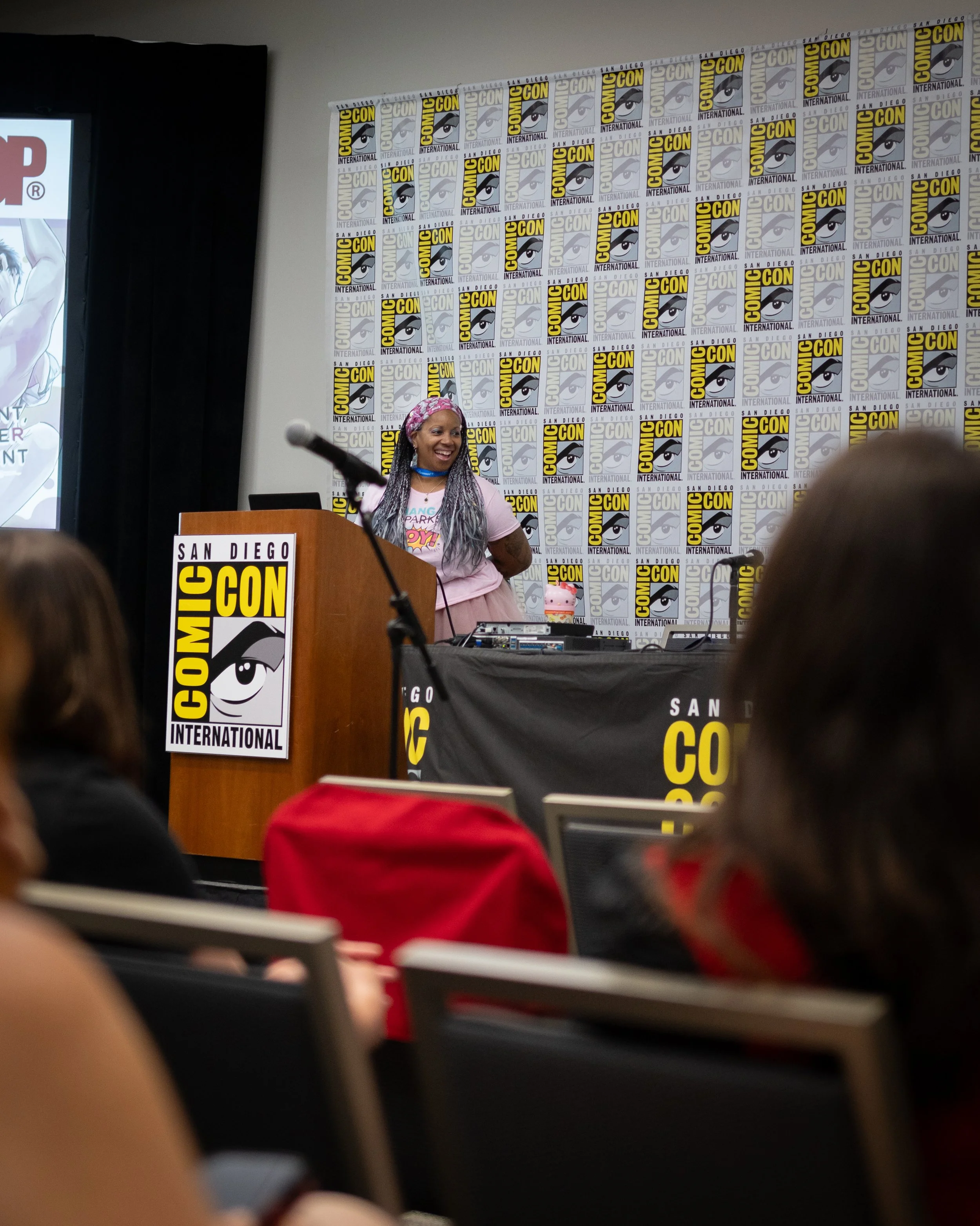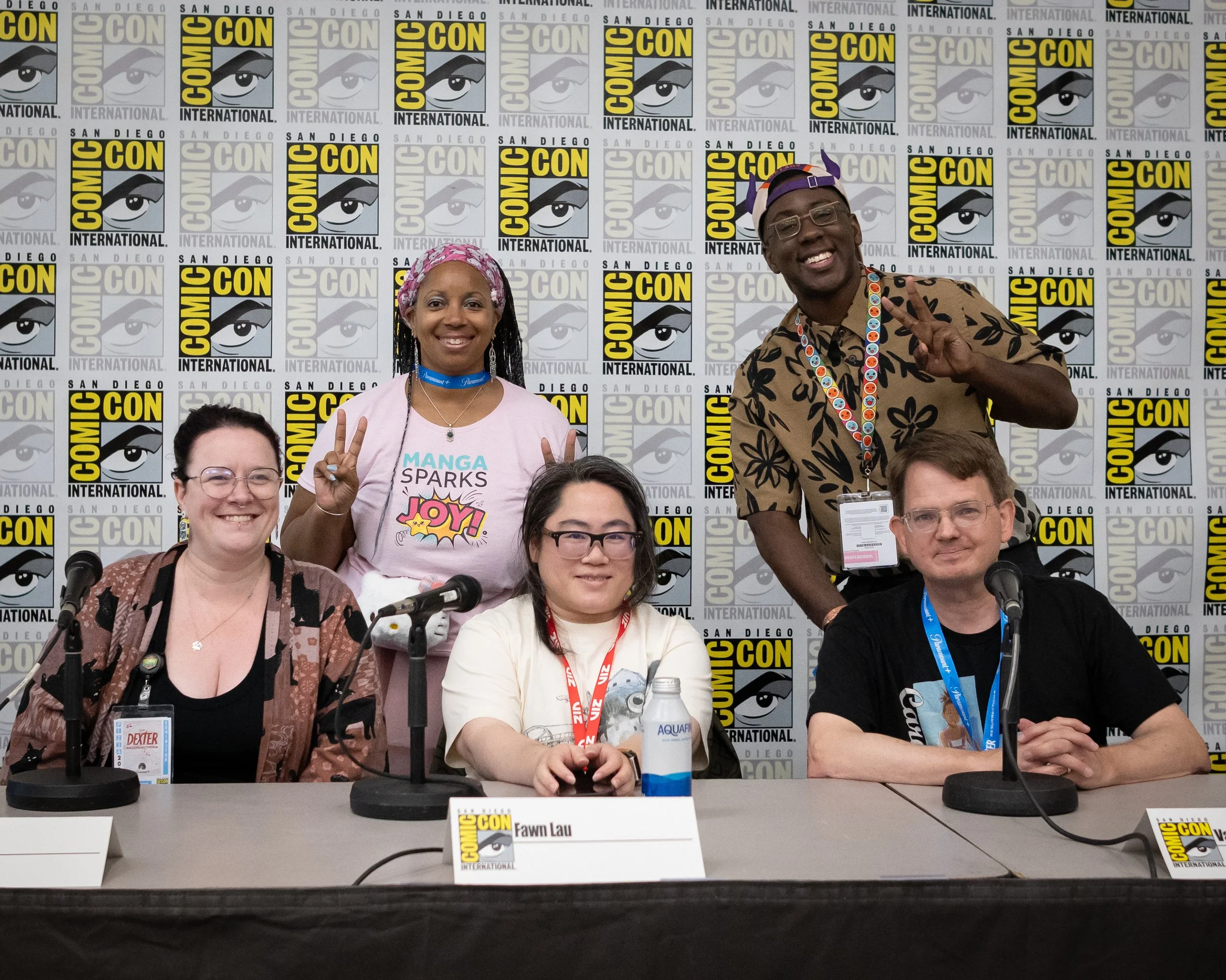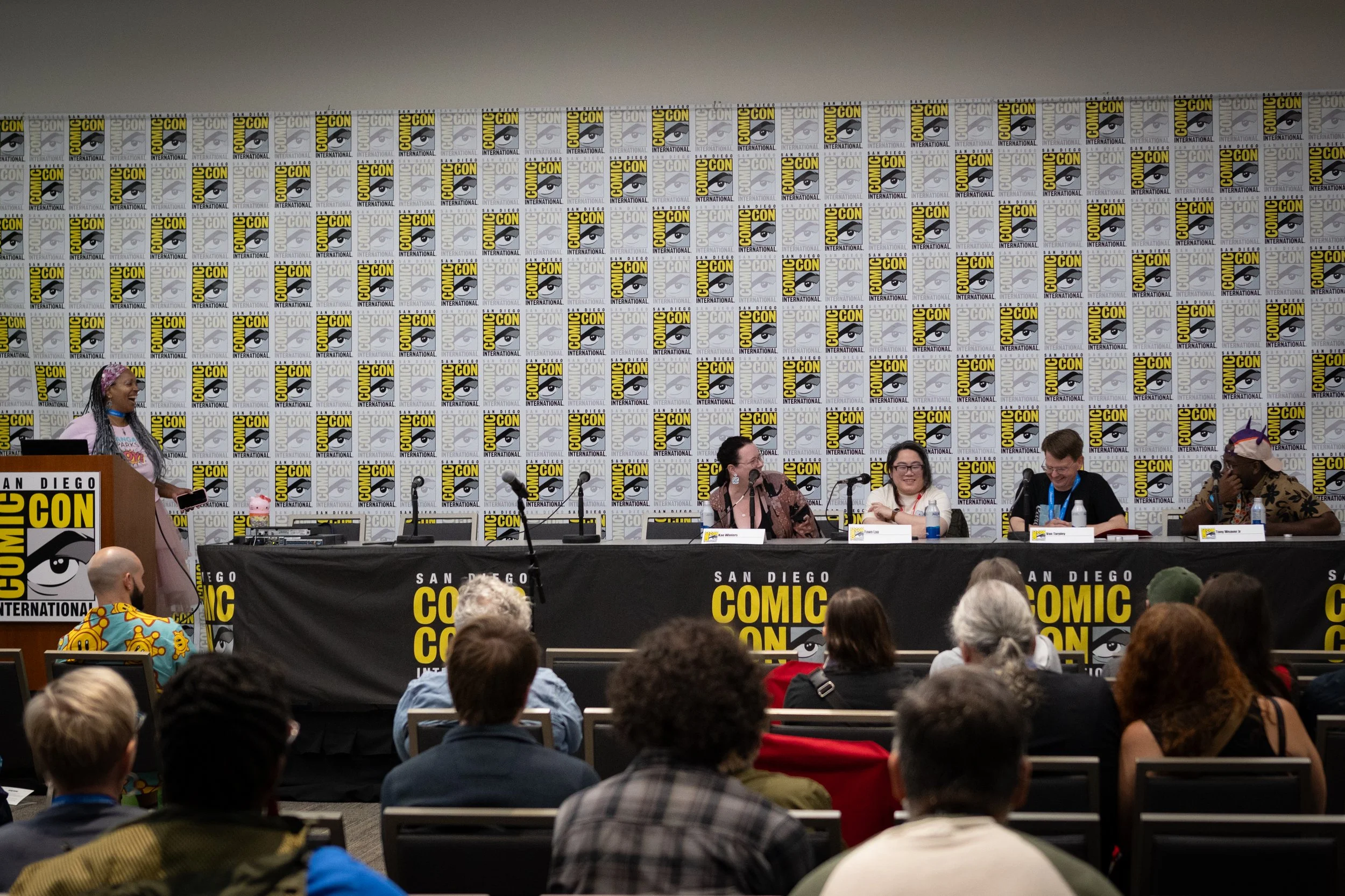Maturing with Manga at SDCC
“I think the most important part of manga and comics is that they serve as a form of soft diplomacy. You see American, Japanese, Chinese, and South Korean titles and I believe if we focused on sharing our creativity, another bomb would never ever need to be made.”
- Shamika Ann Mitchell, Ph.D.
San Diego Comic Con is known for its insightful panels covering nearly every fandom imaginable. This year, educator and board member of Women in Comics Collective, Shamika Ann Mitchell, Ph.D., moderated the “Oh, Grow Up! Adulting in Anime and Manga” panel, which unpacked rating systems, the cultural norms they reflect, and the ageless appeal of a good story.
“This year a highlight was bringing industry professionals from Tokyopop and Viz Media to be part of the discussion. It’s great seeing publishers invested and interested in creating titles for older readers as we want to expand the fandom,” said MItchell. “The diversity of the panelists allowed us to see how we all may read manga, but we go into reading it very differently.”
A diverse group of industry panelists shared their perspectives on the issue of assigning what is age-appropriate. The group included Kae Winters (a marketing representative from Tokyopop), Fawn Lau (a creative director from Viz Media), Van Tarpley (a professor from San Diego State University), Tony Weaver Jr., an Eisner-nominated writer.
For those unfamiliar with descriptors of manga, two common types are Seinen and Josei. Seinen titles tend to cater to younger men, while Josei tend to cater to younger women. In addition to these genres, manga has its own set of ratings criteria that sometimes changes from publisher to publisher.
“Ratings are not limited to what you see, but often relate to tones and what characters say,” said Winters. As an employee with Tokyopop, Winters is very familiar with having to evaluate comics and designate ratings such as All Ages, Youth, Teen, Older Teen, and Mature.
Meanwhile Viz Media rates their titles as either All Ages, Teen, Teen Plus, and Mature. While they are not too far off in terms of rating types, it speaks to the complexity of marketing titles. “Ratings impacting covers in addition to where manga is sold. For example, in the Japanese market, graphic design teams can get away with making the cover look like a novel. But in the United States, covers have to be redesigned [to provide more insight on the content].”
“The challenge with age rating is that they change and there’s not a statistical mathematical formula. We have to go by vibes and market vibes and where we are socially and what’s acceptable,” said Winters.
Despite the daunting sound of “mature,” audiences learned that it’s not always because of gore or sexual content, but the context of topics. Tarpley noted how mature topics are often used in university spaces for discussions as they tend to address hard topics. “The stakes are often high and really really devastating, but that captures the zeitgeist of the moment,” said Tarpley.
Manga may have a stronghold on the market, but Manhua and Manhwa—the respective Chinese and Korean styles of sequential art storytelling—add another dimension of complexity with ratings and understanding where certain titles fit. However, Mitchell noted that with more countries entering the world of comics, comes international benefits. “I think the most important part of manga and comics is that they serve as a form of soft diplomacy. You see American, Japanese, Chinese, and South Korean titles and I believe if we focused on sharing our creativity, another bomb would never ever need to be made.”
Despite rating systems being a combination of publisher and country, Weaver reminded attendees how they should be viewed. “Ratings are there to help parents or educators, but adults shouldn’t limit themselves,” said Weaver. “If you’re an adult, you can make your own choices about what you’re trying to read and engage with. The concept of maturity is universal, but people like different experiences. I enjoy reading titles where I can just relax and feel like a kid again. It satisfies my lizard brain when things were simpler.”
More on the Panelists:
Dr. Shamika Ann Mitchell is an English faculty at Rockland Community College, State University of New York. Her interests are Hip Hop, American literature, comics, popular culture, ethnicity, identity, and subjectivity. She is the creator of #SalaamFandom, an initiative to celebrate and uplift Muslims in all aspects of fandom. Her writing has been published in various texts, including Unstable Masks: Whiteness and American Superhero Comics, Black Muslim Reads, Gloria Naylor’s Fiction: Contemporary Explorations of Class and Capitalism, Icons of Hip Hop, and Women on Women: Indian Women Writers’ Perspectives on Women.
Kae Winters is the Marketing Director at TokyoPop.
Fawn Lau the Creative Director and editor at Viz Originals.
Professor Van Tarpley is a Lecturer in the History Department and is an affiliate of the Center for Comics Studies at San Diego State University.
Tony Weaver Jr. is the author of Eisner nominated Weirdo and is a manga / anime critic.
To learn more, be sure to follow Dr. Shamika Ann Mitchell on Instagram.
Quotes for this article were edited for clarity. This piece was written by Seth Adrian Romo and edited by Samuel Mason White.
